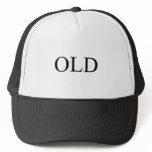Rhys
Moderator
I'm keen to make any survey data that I control freely available for other people to use. Anyone working in caves nearby now or in the future can benefit by being able to add it to their own models without having to chase me down or even re-survey the cave. To this end, with resepct to Cabsav, an ongoing project in the Forest of Dean, I've recently put all my scanned survey notes, data, 3D model files and the survey itself up on the wiki as part of the cave page: http://www.ukcaving.com/wiki/index.php/Cabsav
I've noticed some other club and expedition websites doing similar things. The Garimpeiros club for some sites on the Black Mountain ( http://www.mlaverty.plus.com/gog/survey.htm ), Oxford UCC for parts of Ogof Draenen ( http://www.oucc.org.uk/draenen/survey/draenen_survey_main.htm ) for example.
What do other people do and think about this? It's all quite ad-hoc and lots of different formats are being used. I believe this sort of issue has been talked about in the past within the Surveying group of BCRA, though I've not heard any thing for ages. Is any thing happening on this at the moment?
Anyway, the UKCaving wiki is available to store data if people wish to use it. I've set up a page where this information can be collated: http://www.ukcaving.com/wiki/index.php/Survey_data_repository . At the moment I think the wiki is only configured to handle Survex files (.svx and .3d) and possibly Google Earth files, but if there was a demand, other formats could be added. Common formats like JPEGs and PDFs can also be used, of course.
I'm aware that people may be uneasy about sharing sensitive data when projects are ongoing, but once things settle down, surely it's a good idea to get this stuff out there and saved before the key players, retire, die, emigrate, disappear...
Any thoughts?
Rhys
I've noticed some other club and expedition websites doing similar things. The Garimpeiros club for some sites on the Black Mountain ( http://www.mlaverty.plus.com/gog/survey.htm ), Oxford UCC for parts of Ogof Draenen ( http://www.oucc.org.uk/draenen/survey/draenen_survey_main.htm ) for example.
What do other people do and think about this? It's all quite ad-hoc and lots of different formats are being used. I believe this sort of issue has been talked about in the past within the Surveying group of BCRA, though I've not heard any thing for ages. Is any thing happening on this at the moment?
Anyway, the UKCaving wiki is available to store data if people wish to use it. I've set up a page where this information can be collated: http://www.ukcaving.com/wiki/index.php/Survey_data_repository . At the moment I think the wiki is only configured to handle Survex files (.svx and .3d) and possibly Google Earth files, but if there was a demand, other formats could be added. Common formats like JPEGs and PDFs can also be used, of course.
I'm aware that people may be uneasy about sharing sensitive data when projects are ongoing, but once things settle down, surely it's a good idea to get this stuff out there and saved before the key players, retire, die, emigrate, disappear...
Any thoughts?
Rhys



